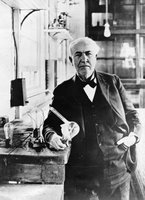How to create your investment plans
The concept of investing can be very intimidating at first. You ask your self, where do I start? Stocks, bonds, cash investment? In order to start, you need to set your financial goals, whether you want to save for your retirement, school education, new house or starting up your own business. To succeed as an investor, planning and discipline is a must.
First step in creating your investment plan is to know what you want to do with your money and when you'll need it.
- Check your time frame, this is important because your investments will rise and fall in value throughout the time you own them.The longer your time frame, the greater your ability to ride out the ups and downs of the markets. Because you won't need your money right away, you can more reasonably select investments whose values might fluctuate in the short term in hopes of earning greater returns over the long term.
- Consider all your goals. Ask your self how can I invest to meet my goals. Whatever your goals are, keep in mind that the sooner you start the better your off.
Understand and choose your assets. Take the time to understand the basics of each asset class and how you can spread the risks around.
- Stocks. Stock represents a share of ownership in a corporation. Stock returns are based on a company's dividends and profits and how investors assess its potential for future profits. Historically, stocks have provided the highest returns over time, but stock prices fluctuate — sometimes dramatically. Investors typically choose stocks for growth of capital, which can help them stay ahead of inflation over the long term.
- Bonds. Bonds are IOUs issued by governments, government agencies, and corporations. Interest-rate changes directly affect the prices and returns of bonds, but in general, bond prices fluctuate less than those of stocks. Investors typically choose bonds to receive income and to diversify stock portfolios.
- Cash investments. A cash investment is a very short-term IOU issued by a government, corporation, bank, or other financial institution. Using the interest payments from such IOUs, money market mutual funds provide income—most often, less than that provided by bond funds—while maintaining a stable price of $1 a share. Investors typically rely on this type of fund to stash money they'll need for emergencies and short-term goals.
Once you have decided what asset your comfortable, your next step is to select the right investments. Although you could build your portfolio with your own individual stocks, I recommend starting with a mutual fund.
The next thing is to know when to change your investment mix. Life changing events can alter your financial situation and give you good reasons to change your mix. If you need to make a change, you can rebalance in three ways:
- Make an exchange. If your asset allocation is dramatically out of balance, you can transfer money from one type of fund to another. If you move retirement money within your employer's plan or an IRA, you won't owe any taxes. Outside a retirement plan, however, you may incur taxable capital gains by exchanging shares. If this is the case, you may prefer to rebalance using one of the next two methods.
- Redirect your new investments. You could simply add new money to the asset class that's underrepresented in your portfolio.
- Redirect dividends and capital gains. Have your fund company invest dividends and capital gains from funds that have grown out of proportion in the funds that need a boost.
Next and final step is to take action. Once you have designed your plans, start working on it.  Remember that the longer you wait, the more you miss out. Each day counts.
Remember that the longer you wait, the more you miss out. Each day counts.
Thomas Edison once said "Opportunity is missed by most people because it is dressed in overalls and looks like work.".The truth is there’s no magic to investing, anyone can learn to do it with just a little effort.
No comments:
Post a Comment